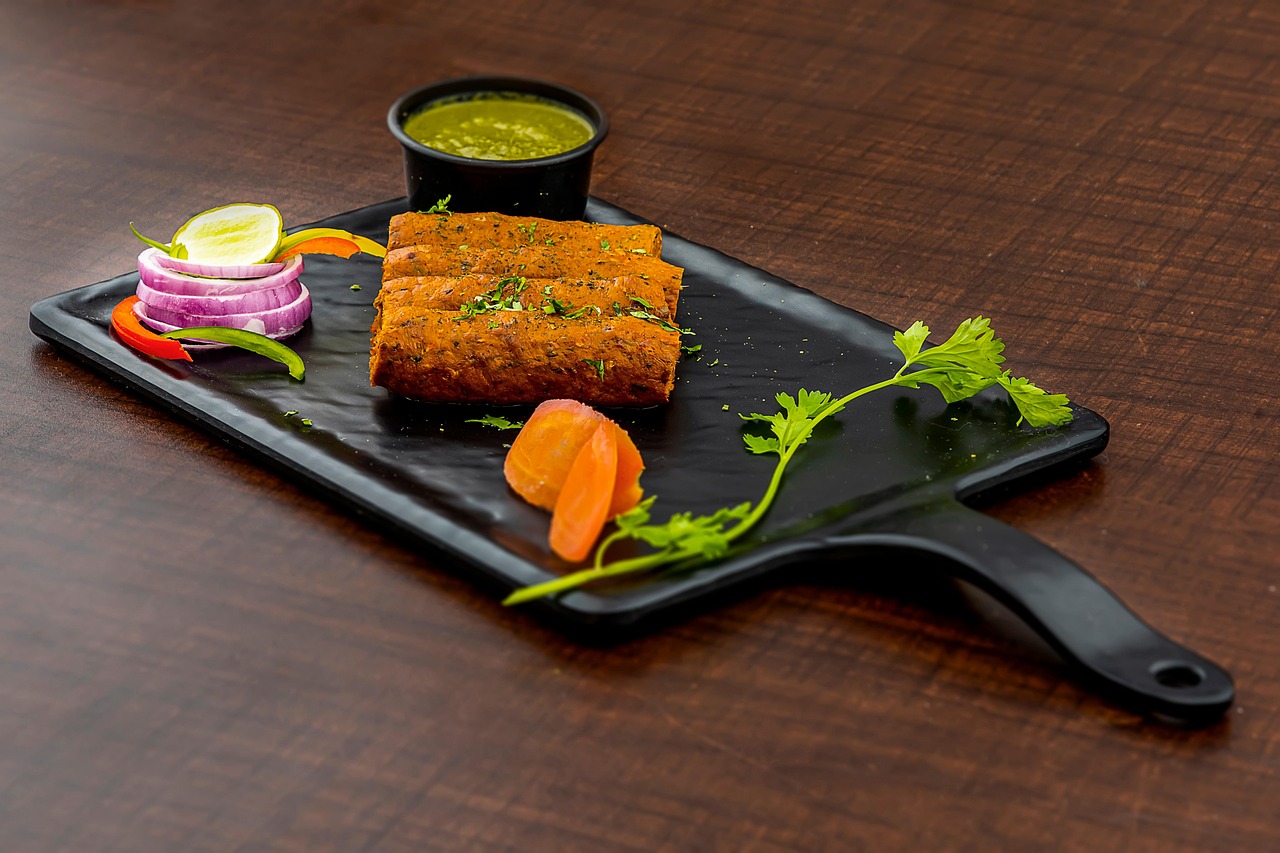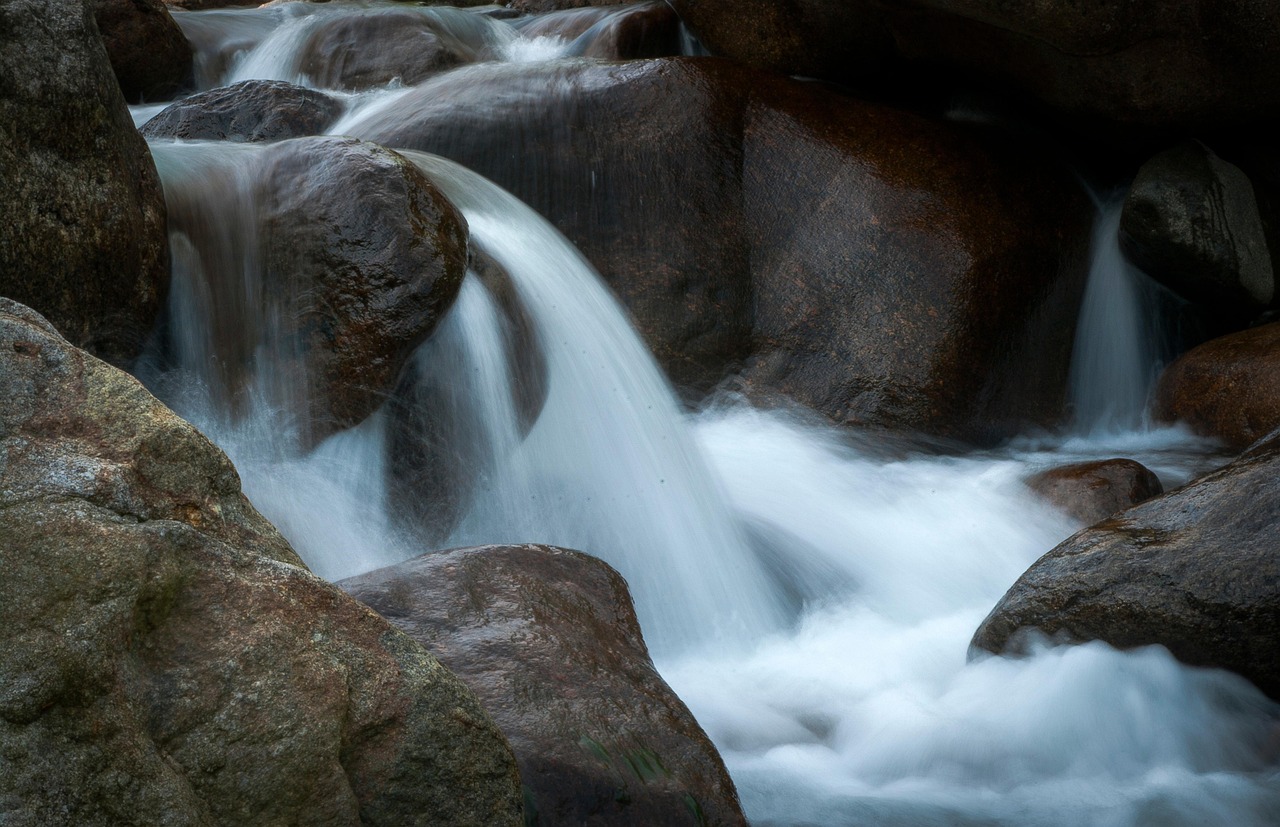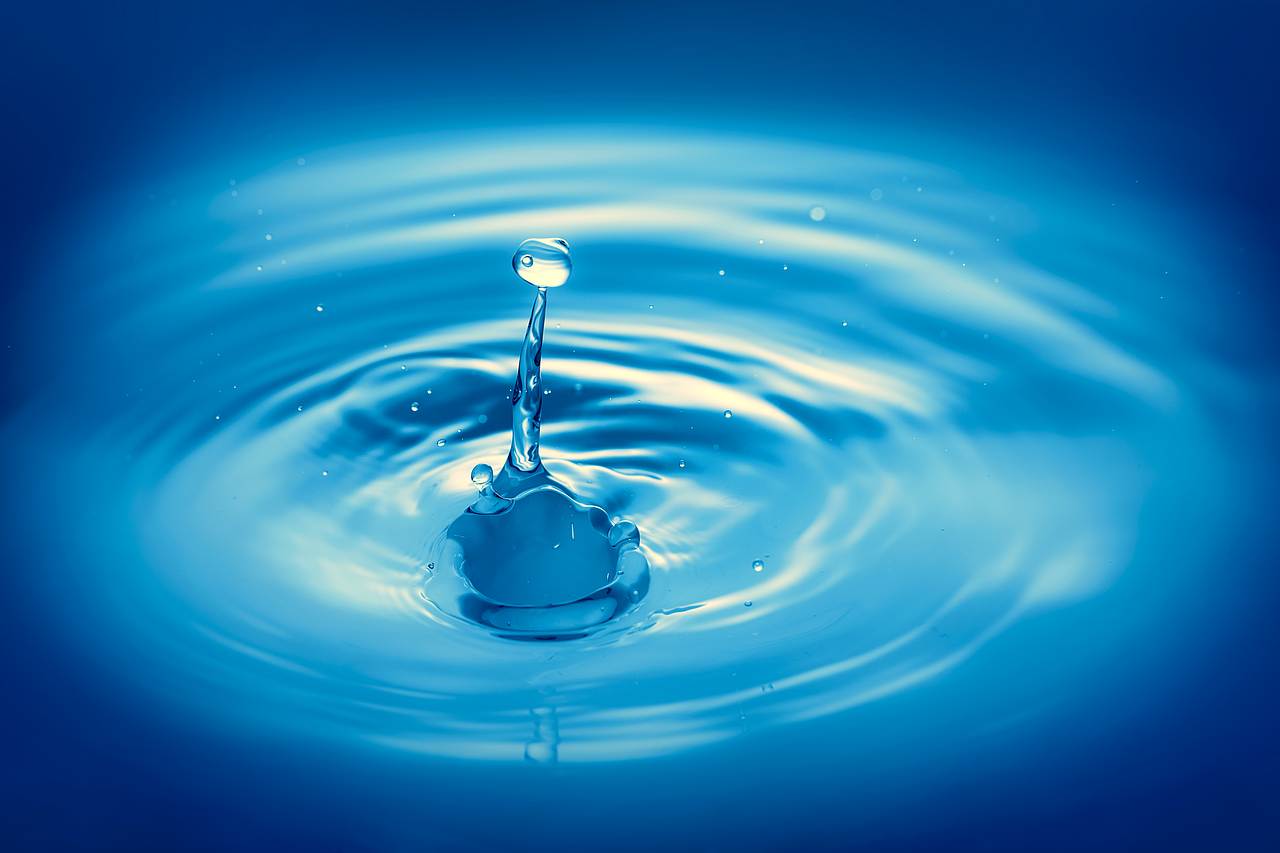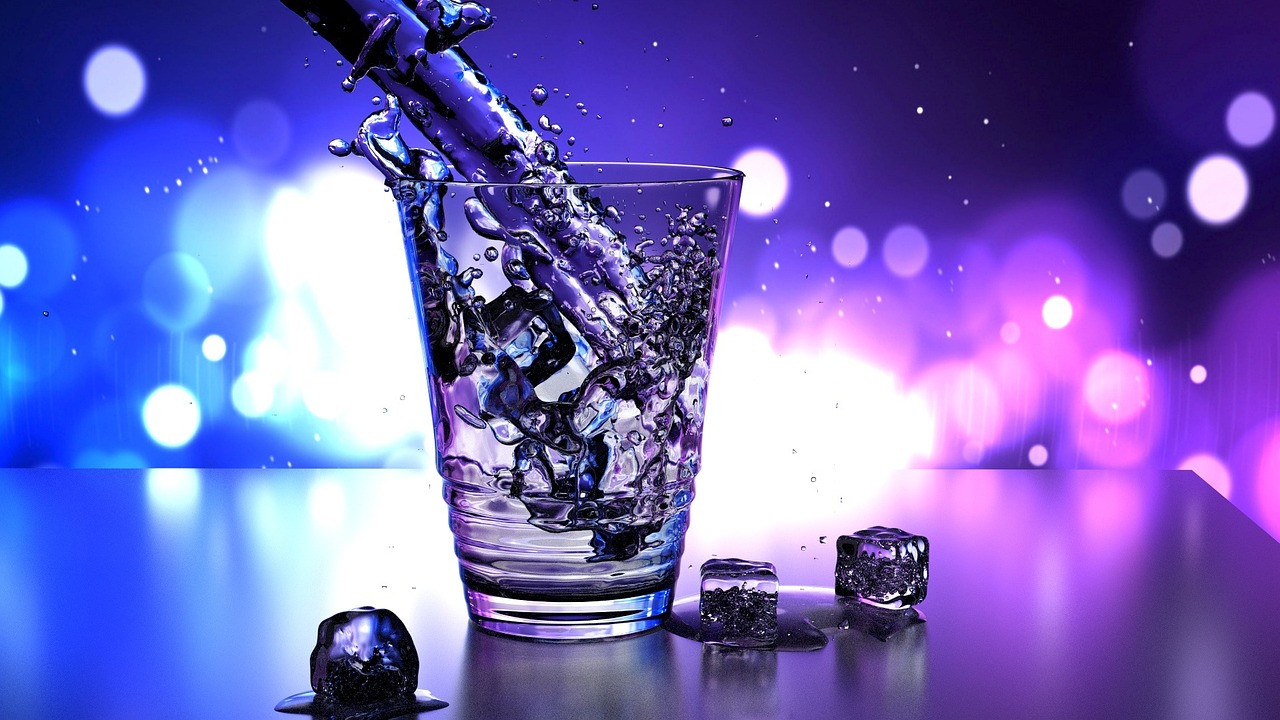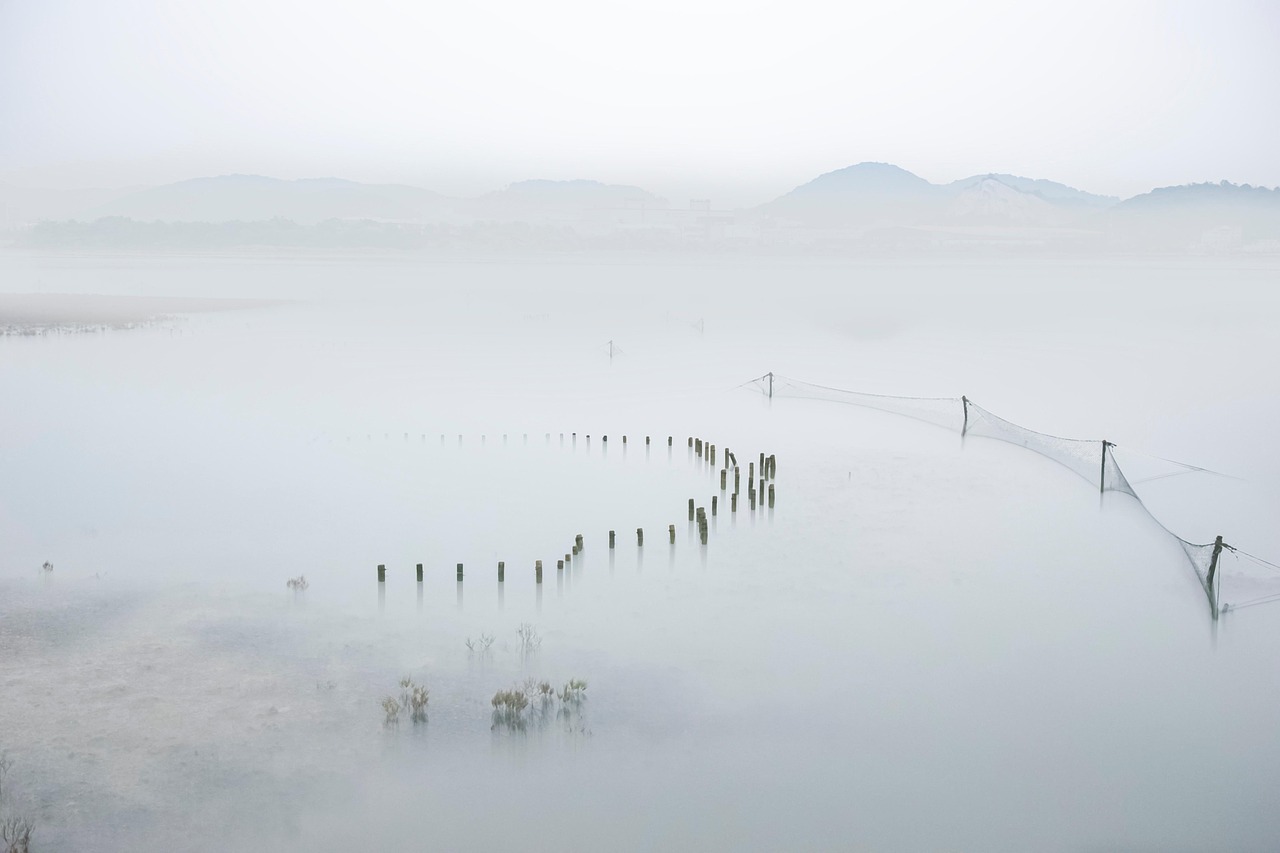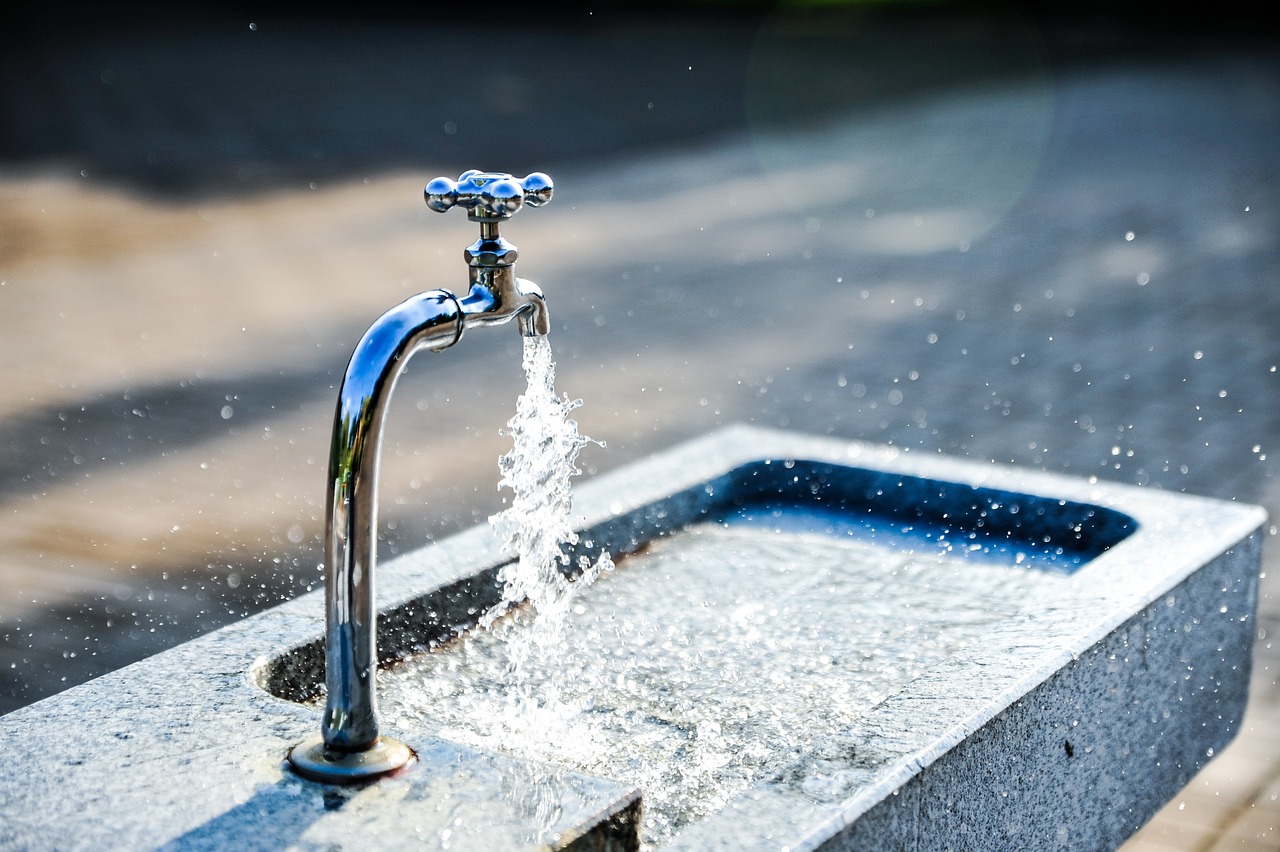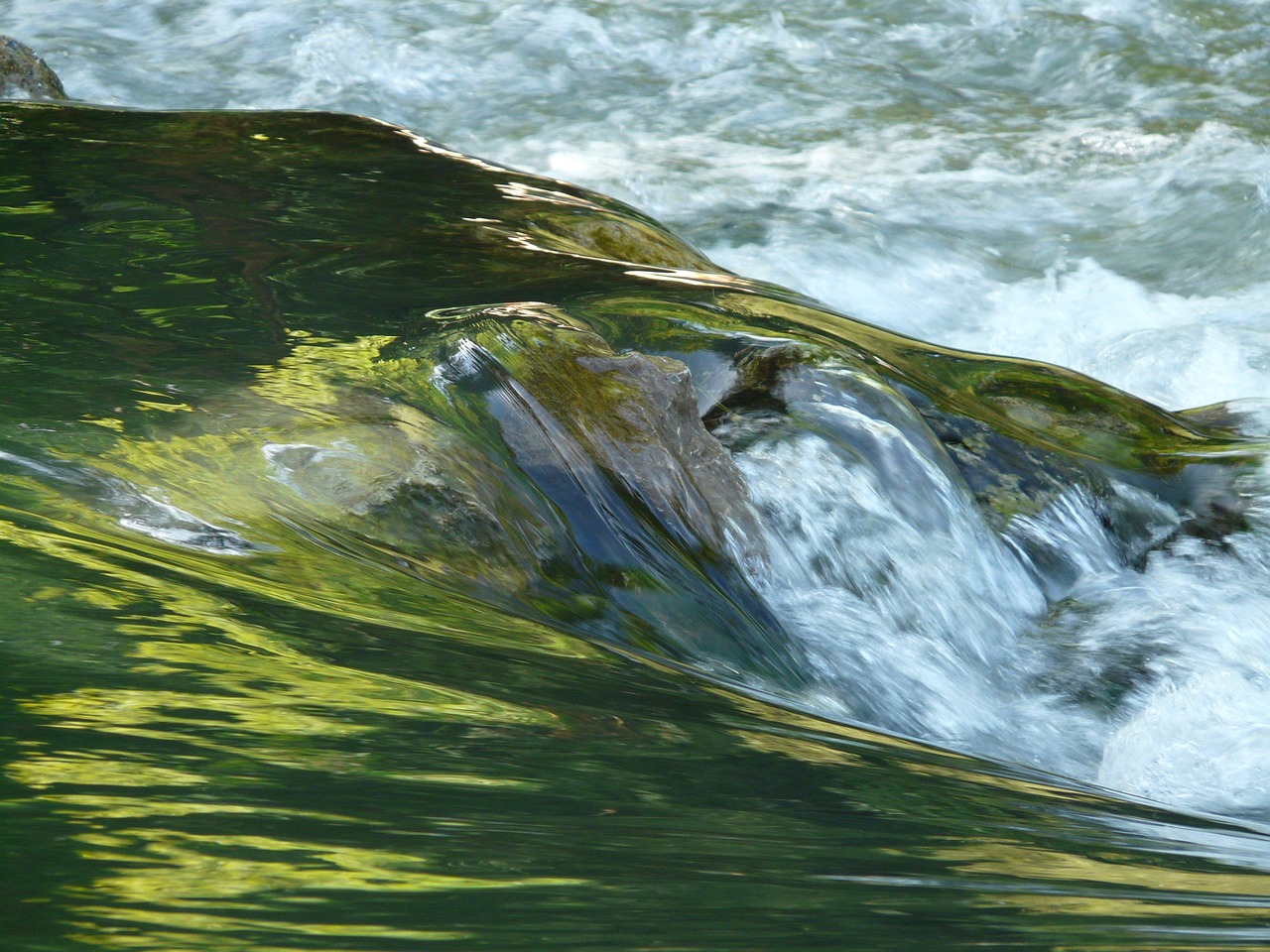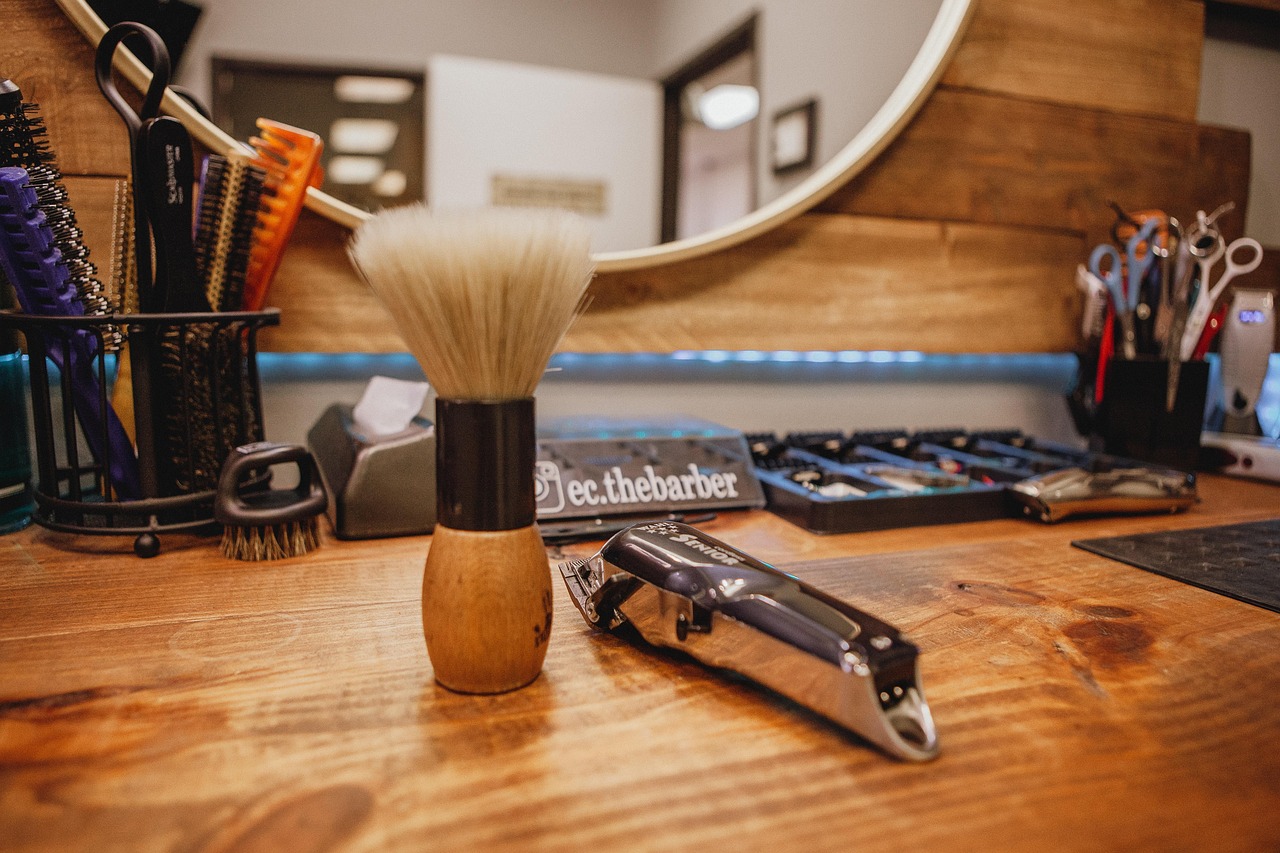This article investigates the fascinating Mpemba effect, a phenomenon that raises the question: can hot water actually freeze faster than cold water? This counterintuitive observation has intrigued scientists and laypeople alike, leading to extensive studies and discussions about its underlying science.
The Mpemba Effect Explained
The Mpemba effect refers to the unexpected occurrence where hot water can freeze more rapidly than cold water under certain circumstances. This section will explore its historical background and the scientific principles that contribute to this phenomenon.
Historical Context of the Mpemba Effect
The origins of the Mpemba effect can be traced back to ancient philosophers, including Aristotle, who speculated that warmer substances could cool more quickly than cooler ones. However, it was Erasto Mpemba, a Tanzanian student in the 1960s, who popularized the concept through his experiments and observations.
Early Observations
- Various scientists have documented instances of the Mpemba effect over the centuries.
- Key figures include Francis Bacon and Lord Kelvin, who noted similar phenomena in their studies.
Modern Research Developments
Recent studies have employed advanced methodologies to quantify the Mpemba effect. Researchers have utilized techniques such as thermography and molecular dynamics simulations to investigate the conditions under which this effect occurs.
Scientific Explanations for the Effect
Several theories have emerged to explain why hot water might freeze faster than cold. Key explanations include:
- Evaporation: Hot water tends to lose mass through evaporation, which may lead to a reduced volume that freezes more quickly.
- Convection currents: The movement of warmer water may create currents that promote faster cooling.
- Supercooling: Cold water can sometimes supercool, remaining liquid below its freezing point, while hot water may avoid this state.
Factors Influencing Freezing Rates
Various factors can influence the freezing rates of water, including:
- Temperature: The initial temperature of the water plays a crucial role in the freezing process.
- Container shape and material: The design and material of the container can significantly impact how quickly water freezes.
- Environmental conditions: Factors such as air pressure and humidity also affect freezing rates.
Practical Implications of the Mpemba Effect
The Mpemba effect has several practical applications:
- Applications in Cooking: Chefs can use the Mpemba effect to their advantage by applying techniques that utilize rapid freezing.
- Impacts on Industrial Processes: Industries that rely on freezing methods can optimize their operations by understanding the Mpemba effect.
Common Misconceptions About Freezing Water
Despite the intriguing nature of the Mpemba effect, several misconceptions persist:
- Hot water always freezes faster: This is not universally true; specific conditions must be met for the effect to occur.
- Temperature is the only factor: Other variables, such as container shape and environmental conditions, also play a significant role.
The Mpemba effect continues to be a subject of scientific inquiry and debate, with ongoing research aimed at uncovering its complexities. Understanding this phenomenon not only enhances our knowledge of physical processes but also opens up new avenues for practical applications across various fields.
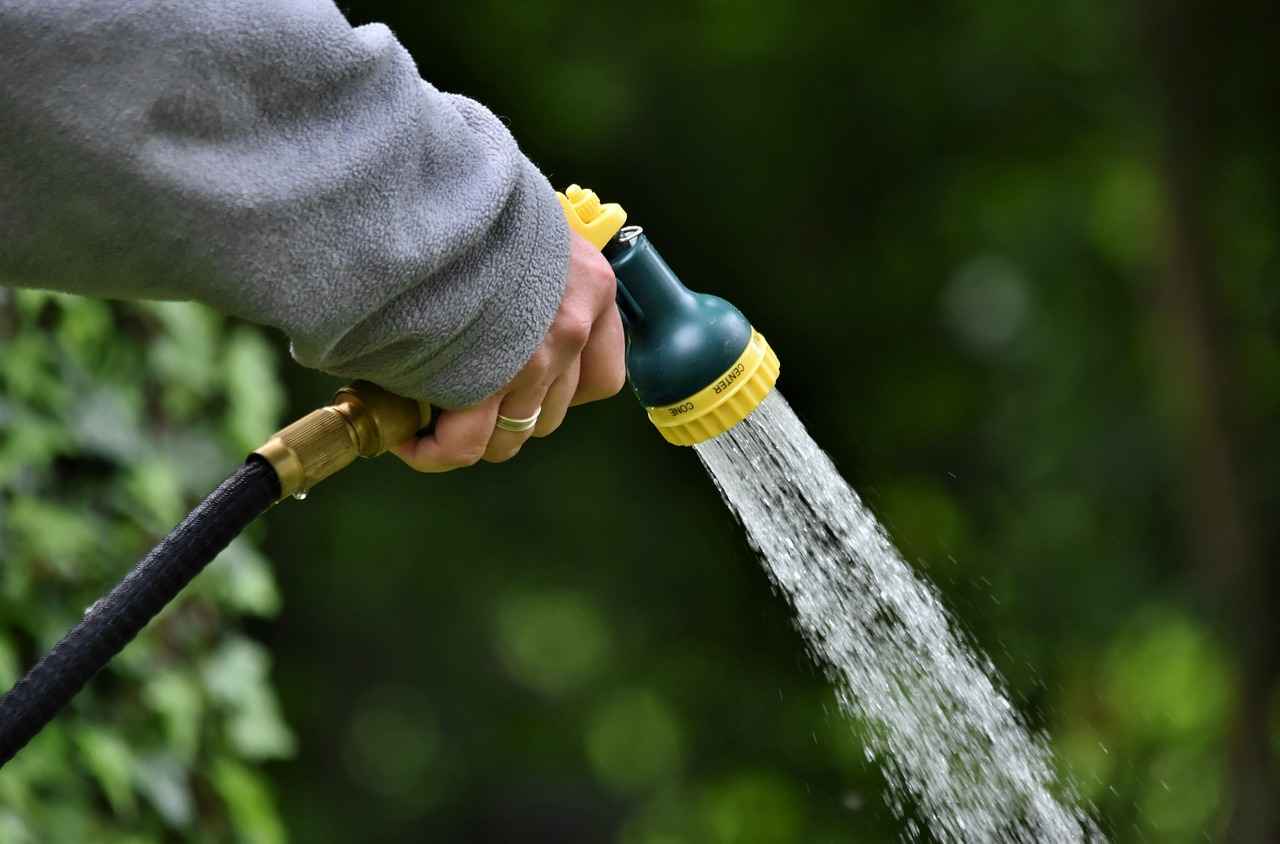
The Mpemba Effect Explained
The Mpemba effect is a fascinating phenomenon that has intrigued scientists and laypeople alike for centuries. It refers to the counterintuitive observation that, under certain conditions, hot water can freeze faster than cold water. This effect challenges our conventional understanding of thermodynamics and brings forth questions about the nature of water and its unique properties.
To grasp the Mpemba effect, one must consider the underlying principles of heat transfer and molecular behavior. When water is heated, its molecules gain energy and move more rapidly. Upon cooling, these molecules must lose energy to transition from a liquid to a solid state. However, the dynamics of this process can be influenced by various factors, leading to the surprising outcome observed in the Mpemba effect.
The roots of the Mpemba effect can be traced back to ancient philosophers. Notably, Aristotle was among the first to postulate that warmer substances might cool more quickly than their cooler counterparts. However, it wasn’t until the 1960s that Tanzanian student Erasto Mpemba brought this phenomenon to the forefront of scientific inquiry. His observations during a school experiment sparked interest and further research into this perplexing effect.
Several hypotheses have been proposed to explain why hot water might freeze faster than cold. These include:
- Evaporation: Hot water experiences a higher rate of evaporation, which reduces the volume of water that needs to freeze.
- Convection Currents: Heated water may create convection currents that promote more uniform cooling throughout the liquid.
- Supercooling: Cold water may supercool without freezing, while hot water may bypass this state.
Each of these factors can contribute to the Mpemba effect, depending on the specific conditions of the experiment.
Understanding the Mpemba effect requires consideration of several variables that influence freezing rates:
- Temperature: The initial temperature of the water plays a crucial role, but it is not the only factor.
- Container Shape and Material: The design and material of the container can impact heat transfer efficiency.
- Environmental Conditions: Ambient temperature, humidity, and airflow can also affect the freezing process.
The Mpemba effect has practical applications across various fields:
- Culinary Techniques: Chefs can utilize the Mpemba effect for rapid freezing of ingredients, enhancing the culinary experience.
- Industrial Applications: Industries that rely on freezing processes can optimize their operations by understanding and applying the principles of the Mpemba effect.
Despite its intriguing nature, there are several misconceptions surrounding the Mpemba effect:
- Hot Water Always Freezes Faster: This is not universally true, as specific conditions must be met for the effect to occur.
- Temperature is the Sole Factor: Other variables, such as container shape and environmental conditions, also play significant roles.
In summary, the Mpemba effect is a captivating area of study that continues to challenge our understanding of the physical world. As research evolves, we gain deeper insights into the complexities of water and its behavior, revealing that even the simplest substances can hold surprising secrets.

Historical Context of the Mpemba Effect
The Mpemba effect is a fascinating phenomenon that has intrigued scientists and curious minds alike for centuries. The historical context surrounding this effect provides a rich tapestry of scientific inquiry and philosophical thought, tracing back to ancient times and evolving through modern research.
The earliest mention of the idea that hot water might freeze faster than cold can be attributed to Aristotle. In his writings, Aristotle proposed that warmer substances could cool more rapidly than cooler ones, a concept that laid the groundwork for future explorations into thermal dynamics. His theories, although not empirically tested at the time, sparked curiosity about the behavior of water and its unique properties.
Fast forward to the 1960s, when a Tanzanian student named Erasto Mpemba brought this concept to the forefront of scientific discussion. While experimenting with ice cream preparation, Mpemba observed that hot mixtures froze faster than cold ones. His findings were initially met with skepticism, but he persisted in sharing his observations, ultimately leading to a formal investigation into this counterintuitive effect.
In 1969, Mpemba’s work was published in a scientific journal, bringing significant attention to this unusual behavior of water. The Mpemba effect was officially named after him, and it has since become a cornerstone of discussions in both physics and chemistry. This phenomenon challenges our conventional understanding of thermodynamics and raises questions about the nature of heat transfer and molecular interactions.
| Key Historical Figures | Contributions |
|---|---|
| Aristotle | Proposed that warmer substances cool faster than cooler ones. |
| Erasto Mpemba | Documented the observation that hot water freezes faster than cold. |
Throughout the years, various scientists have conducted experiments to validate the Mpemba effect. Notable studies have examined factors such as evaporation, which can reduce the volume of hot water, and convection currents, which may enhance the cooling process. These investigations have led to a deeper understanding of the conditions under which the Mpemba effect can occur, emphasizing that it is not a universal rule but rather a phenomenon influenced by specific variables.
In addition to the scientific implications, the Mpemba effect has also sparked philosophical discussions about the nature of knowledge and understanding in science. The initial skepticism faced by Mpemba highlights the challenges that groundbreaking ideas often encounter. This historical context serves as a reminder of the importance of open-mindedness and the willingness to explore the unknown.
As we continue to delve into the complexities of the Mpemba effect, it becomes evident that its historical roots enrich our understanding of not only the phenomenon itself but also the broader landscape of scientific inquiry. The interplay between historical observations and modern research underscores the dynamic nature of science, where past insights can illuminate current investigations.
In summary, the Mpemba effect is a remarkable example of how historical context can enhance our appreciation of scientific phenomena. From Aristotle’s early theories to Mpemba’s empirical observations, the journey of this effect reflects the evolving nature of scientific thought and the ongoing quest for knowledge.
Early Observations
Early Observations of the Mpemba EffectThe Mpemba effect, a fascinating phenomenon where hot water can freeze faster than cold water, has intrigued scientists for centuries. Historical records indicate that this counterintuitive observation has been noted by various scholars throughout history. Understanding these early observations provides valuable context for modern scientific inquiry into this effect.
One of the earliest references to the Mpemba effect can be traced back to Aristotle. In his writings, he proposed that warmer substances could cool more rapidly than cooler ones, a notion that laid the groundwork for future explorations into thermal dynamics. Although Aristotle did not explicitly describe the Mpemba effect, his ideas sparked curiosity about temperature-related phenomena.
Fast forward to the late 17th century, when the renowned scientist Robert Boyle conducted experiments that hinted at the Mpemba effect. Boyle observed that water at different temperatures exhibited varying cooling rates, although his findings did not receive widespread attention at the time. His work, however, contributed to a growing interest in the relationship between temperature and freezing.
In the 19th century, the famous physicist Lord Kelvin further investigated the cooling properties of water. He noted that the behavior of water could be influenced by a variety of factors, including temperature and pressure. His experiments provided a deeper understanding of phase transitions, although the specific phenomenon of hot water freezing faster remained largely unexplored.
The Mpemba effect was not named until the 1960s, when a Tanzanian student named Erasto Mpemba observed this phenomenon while making ice cream. His anecdotal experience led him to question why hot water seemed to freeze faster than cold. This observation prompted him to conduct experiments, ultimately leading to a formal study that gained attention in the scientific community.
Mpemba’s work was met with skepticism, but it also ignited interest among researchers. In 1969, a group of scientists, including Dr. Dennis G. B. H. W. van der Waals, published a paper that validated Mpemba’s findings. They conducted controlled experiments that demonstrated the Mpemba effect under specific conditions, sparking further investigation into its underlying mechanisms.
Since then, numerous studies have sought to replicate and explain the Mpemba effect, often yielding mixed results. Some researchers have proposed theories related to evaporation, suggesting that hot water loses mass more quickly, thereby allowing it to freeze faster. Others have explored the role of convection currents and the structure of water molecules at varying temperatures.
In summary, early observations of the Mpemba effect have laid a rich historical foundation for understanding this intriguing phenomenon. From Aristotle’s initial theories to Erasto Mpemba’s modern experiments, the journey of discovery continues to captivate scientists and laypersons alike. As research advances, the Mpemba effect remains a topic of exploration, challenging our perceptions of temperature and freezing.
Aristotle’s Theories
The exploration of the Mpemba effect has roots that can be traced back to the ancient philosopher Aristotle. His theories regarding the cooling of substances laid the groundwork for understanding this fascinating phenomenon. Aristotle proposed that warmer substances could cool more rapidly than their cooler counterparts, a notion that was both groundbreaking and controversial for its time.
Aristotle’s insights were not merely speculative; they were based on careful observation of natural processes. He noted that when heated water was exposed to cold air, it seemed to lose heat more quickly than cooler water under similar conditions. This observation, although not fully understood in his era, hinted at the complex interactions between temperature, heat transfer, and environmental factors that would later be explored in the context of the Mpemba effect.
Fast forward to the 20th century, and the Mpemba effect gained significant attention when Erasto Mpemba, a Tanzanian student, revived interest in this phenomenon during the 1960s. His experiments demonstrated that, under certain conditions, hot water could freeze faster than cold water, challenging the conventional wisdom of thermodynamics. This sparked a renewed interest in Aristotle’s early theories, prompting scientists to revisit and investigate the principles behind the cooling rates of water.
Modern scientific inquiry has sought to validate and expand upon Aristotle’s original ideas. Researchers have proposed numerous explanations for the Mpemba effect, including factors such as evaporation, convection currents, and the behavior of water molecules at different temperatures. For instance, evaporation can reduce the volume of hot water, leading to a quicker freezing process. Additionally, the movement of molecules in hot water can create convection currents that enhance heat loss, further contributing to a faster freezing time.
Despite the advancements in our understanding, the Mpemba effect remains a topic of debate among scientists. Some researchers argue that the effect is not universally applicable and depends significantly on the specific conditions under which the freezing occurs. For example, the shape of the container, the surrounding environment, and even the presence of impurities can all influence the rate at which water freezes. These variables underscore the complexity of the phenomenon and highlight the need for continued research.
In summary, Aristotle’s theories regarding the cooling of warmer substances have paved the way for modern explorations into the Mpemba effect. His observations, once considered mere curiosities, have evolved into a subject of scientific inquiry that straddles the line between established physics and intriguing anomalies. As we continue to investigate this phenomenon, the interplay between historical insights and contemporary research will undoubtedly yield further revelations about the nature of water and its freezing processes.
Modern Research Developments
The Mpemba effect, a fascinating phenomenon where hot water freezes faster than cold under certain conditions, has intrigued scientists for centuries. Recent studies have made significant strides in understanding this counterintuitive observation, employing advanced techniques and innovative methodologies to quantify and explain the effect.
Modern research has focused on various aspects of the Mpemba effect, shedding light on the conditions that facilitate this phenomenon. One key area of investigation is the role of evaporation. Studies suggest that hot water, when exposed to cold air, experiences higher rates of evaporation. This loss of mass can lead to a quicker freezing process, as there is less water to freeze overall. Researchers have utilized controlled experiments to measure the rate of evaporation in different temperature scenarios, providing empirical support for this theory.
Another significant factor explored in recent studies is convection currents. Hot water tends to create more vigorous convection currents compared to cold water. These currents can enhance the distribution of temperature throughout the liquid, allowing for a more uniform cooling process. By employing thermal imaging and advanced fluid dynamics simulations, scientists have been able to visualize and analyze the behavior of water molecules during the freezing process, offering insights into how convection contributes to the Mpemba effect.
Additionally, researchers have examined the impact of container material and shape on freezing rates. Different materials conduct heat at varying rates, which can influence how quickly water cools. For instance, metal containers may facilitate faster heat transfer compared to plastic ones. Recent experiments have demonstrated that the shape of the container can also play a crucial role, with wider containers promoting faster freezing due to increased surface area exposure to cold air. These findings have been substantiated through systematic testing across various materials and geometries.
Moreover, the initial temperature of the water has been a focal point in modern research. Studies indicate that water starting at higher temperatures may not only freeze faster but also undergoes different physical changes that can affect the freezing process. For example, the presence of dissolved gases and impurities can alter the freezing point, complicating the traditional understanding of freezing dynamics. Researchers have conducted experiments to analyze the purity levels of water and their correlation with freezing rates, providing a deeper understanding of the Mpemba effect.
Despite the advancements, the Mpemba effect remains a subject of debate within the scientific community. Some researchers argue that the effect is not universally applicable and depends heavily on specific conditions, such as environmental temperature and the properties of the water used. This ongoing discourse highlights the complexity of the phenomenon and the need for further research to establish a comprehensive understanding.
In summary, modern research developments surrounding the Mpemba effect have utilized advanced methodologies to explore the underlying mechanisms at play. From evaporation and convection to container properties and initial temperatures, these studies have provided valuable insights that deepen our understanding of this intriguing phenomenon. As research continues, it is likely that new findings will emerge, further elucidating the complexities of how and why hot water can freeze faster than cold.
Scientific Explanations for the Effect
The phenomenon where hot water freezes faster than cold water, known as the Mpemba effect, has puzzled scientists for centuries. While it may seem counterintuitive, several scientific explanations have emerged to clarify this intriguing occurrence. This section delves into the most prominent theories, including evaporation and convection, which help to illuminate why hot water can sometimes freeze more quickly than its colder counterpart.
One of the leading explanations for the Mpemba effect is the role of evaporation. When hot water is placed in a freezing environment, a significant amount of it can evaporate before freezing occurs. This loss of mass means that there is less water to freeze, which can lead to a quicker freezing time. Additionally, as the water evaporates, the remaining liquid becomes cooler, thereby accelerating the freezing process.
Convection plays a crucial role in the freezing dynamics of water. Hot water tends to have a more turbulent flow compared to cold water. This turbulence creates convection currents that help distribute heat more evenly throughout the liquid. As a result, the temperature of the water can drop more uniformly, allowing it to reach freezing temperatures faster. In contrast, cold water may experience stagnant areas that can slow down the overall cooling process.
Another interesting aspect of the Mpemba effect is supercooling. Cold water can sometimes cool below its freezing point without actually turning into ice. This phenomenon occurs because the water lacks nucleation sites—tiny particles or imperfections that facilitate ice crystal formation. In some cases, hot water may not supercool as readily as cold water, leading to a quicker transition from liquid to solid when the freezing point is reached.
The container used to hold the water can also affect freezing rates. The material and shape of the container can influence how heat is dissipated. For instance, metal containers may conduct heat away from hot water more efficiently than those made of plastic. Furthermore, environmental conditions such as air temperature and humidity can impact the rate of heat loss, further complicating the Mpemba effect.
Numerous experiments have been conducted to study the Mpemba effect, yielding varying results. Some studies confirm that under specific conditions, hot water does freeze faster, while others find no significant difference. The inconsistency in results highlights the complexity of the factors involved and suggests that the Mpemba effect may not be universally applicable. Researchers continue to explore the underlying mechanisms to gain a more comprehensive understanding of this phenomenon.
In conclusion, the Mpemba effect serves as a fascinating example of how our understanding of physics and thermodynamics is still evolving. By examining the roles of evaporation, convection, supercooling, and other variables, we can gain deeper insights into why hot water can sometimes freeze faster than cold water. This exploration not only enriches our scientific knowledge but also sparks curiosity about the natural world around us.
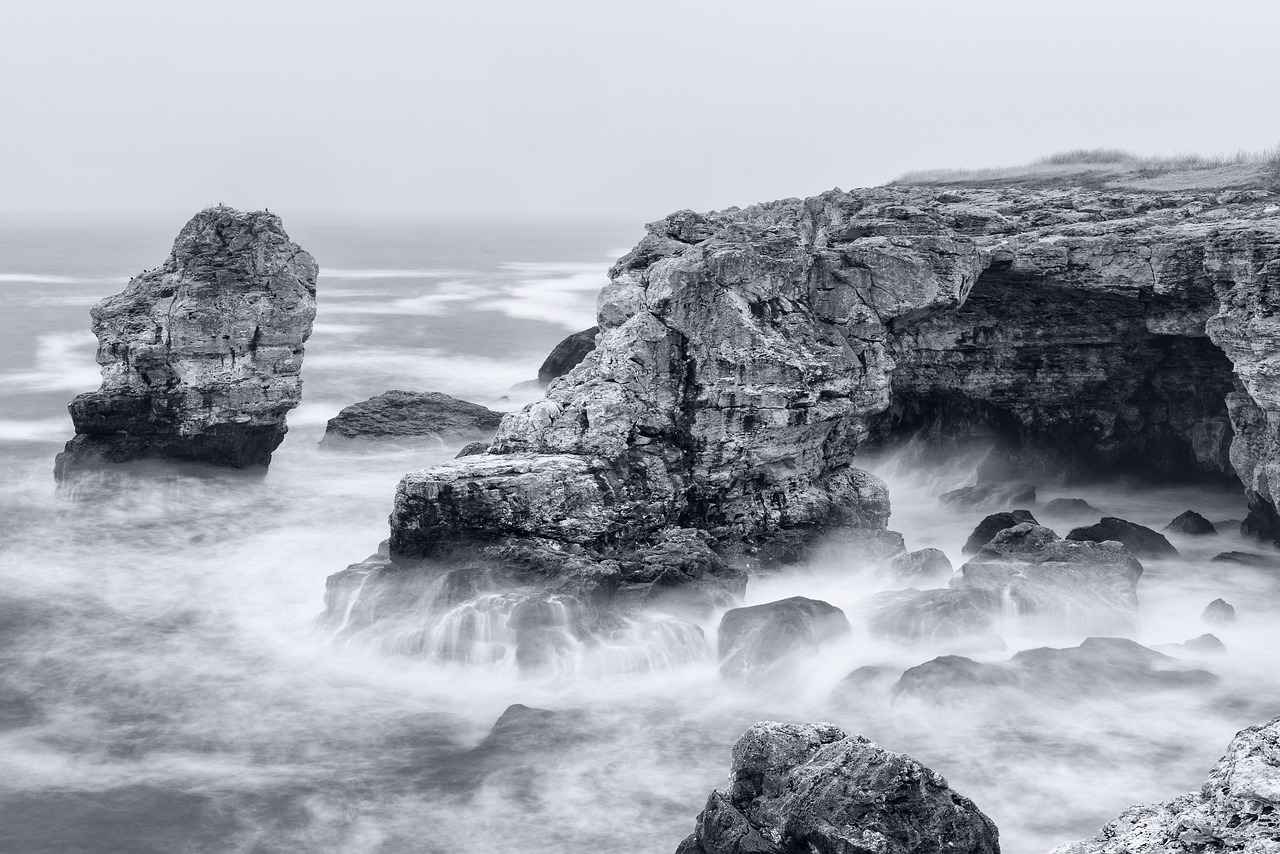
Factors Influencing Freezing Rates
Understanding the of water is crucial for grasping the complexities of the Mpemba effect. While it may seem straightforward, the freezing process is affected by a variety of variables that can lead to surprising outcomes. This section will delve into the primary factors that influence how quickly water can freeze, including temperature, container shape, and environmental conditions.
Temperature is perhaps the most obvious factor affecting the freezing rate of water. However, it is important to understand that not all temperatures have the same effect. When water is heated, it undergoes changes at the molecular level. The molecules move more rapidly, and this increased kinetic energy can lead to a phenomenon where, under certain conditions, hot water may freeze faster than cold water. This is a key aspect of the Mpemba effect.
- Initial Temperature: The starting temperature of water significantly impacts its freezing time. Hot water, when placed in a cold environment, may lose heat more rapidly due to a higher temperature differential.
- Cooling Rate: Hot water can experience a higher rate of evaporation, which not only cools the remaining liquid but also reduces the volume that needs to freeze.
The shape and material of the container holding the water can also play a significant role in the freezing process. Different materials conduct heat at varying rates, which can affect how quickly the water inside them can freeze.
- Material Conductivity: Metal containers, for example, tend to conduct heat away from the water more efficiently than plastic or glass. This can lead to faster freezing times in metal containers.
- Surface Area: The shape of the container can affect the surface area exposed to the cold environment. A wider container allows for more evaporation and cooling, potentially speeding up the freezing process.
The surrounding environment also has a profound impact on the freezing rates of water. Factors such as air temperature, wind speed, and humidity can all influence how quickly water freezes.
- Ambient Temperature: If the surrounding air is extremely cold, it can facilitate quicker freezing, regardless of the initial temperature of the water.
- Wind Chill: Increased wind speed can enhance the cooling effect, allowing both hot and cold water to freeze faster.
- Humidity Levels: High humidity can slow down the evaporation process, which may impact the freezing rate of hot water compared to cold water.
In summary, the freezing rates of water are influenced by a complex interplay of factors, including temperature, container shape, and environmental conditions. Understanding these variables can provide insight into the Mpemba effect and the conditions under which hot water might freeze faster than cold. By considering these elements, we can better appreciate the fascinating science behind freezing and the surprising behaviors of water.
Temperature Variations
Temperature is a fundamental factor in the freezing process of water, influencing how quickly and efficiently it transitions from a liquid to a solid state. Understanding the dynamics of temperature variations is essential for unraveling the complexities of the Mpemba effect, a phenomenon where hot water can freeze faster than cold water under specific conditions.
When water is heated, its molecules gain energy and move more vigorously. This increased molecular activity can lead to several interesting outcomes during the freezing process. As the temperature of water rises, the kinetic energy of the water molecules also increases, which can affect how they interact with one another when the temperature begins to drop.
Phase Transition Dynamics
As water cools, it undergoes a phase transition where the molecules begin to slow down and come together to form a solid structure. However, the rate at which this occurs can be influenced by the starting temperature of the water. In the case of the Mpemba effect, several factors come into play:
- Evaporation: Hot water tends to evaporate more quickly than cold water. This loss of mass can lead to a faster freezing process, as there is less water to freeze overall.
- Convection Currents: In hot water, convection currents can distribute temperature more evenly throughout the liquid. This uniform temperature can facilitate quicker cooling and freezing.
- Supercooling: Cold water may supercool, remaining in liquid form even below its freezing point. This can delay the freezing process compared to hot water, which might not experience supercooling to the same extent.
Temperature Gradients
Another important aspect of temperature variations is the gradient between the water and its environment. The greater the temperature difference, the faster the rate of heat transfer. For instance, if hot water is placed in a freezing environment, the significant temperature gradient can accelerate the cooling process, potentially leading to faster freezing times compared to cold water.
Container Influence
The shape and material of the container holding the water can also affect how temperature variations impact freezing. For example, a wide, shallow container allows for a larger surface area, facilitating heat loss and promoting quicker freezing. In contrast, a tall, narrow container may retain heat longer, delaying the freezing process.
Moreover, the thermal conductivity of the container material plays a crucial role. Materials that conduct heat well, such as metal, can enhance the cooling rate of hot water, potentially contributing to the Mpemba effect. Conversely, insulating materials may hinder heat loss, affecting freezing times.
Environmental Conditions
External factors, such as ambient temperature and wind speed, also influence the freezing process. In colder environments, the rate of heat loss from hot water can increase, making it more likely to freeze faster. Additionally, breezy conditions can enhance evaporation and heat loss, further contributing to the Mpemba effect.
In summary, temperature variations significantly impact the freezing process of water. Understanding the interactions between temperature, evaporation, convection, and environmental factors is crucial for comprehending the Mpemba effect. As research continues to explore this fascinating phenomenon, it becomes increasingly clear that the science behind freezing is not as straightforward as it may seem.
Container Shape and Material
The freezing rate of water is influenced by various factors, but two of the most significant are the shape and material of the container in which the water is held. Understanding these elements can provide insight into the intriguing phenomenon of the Mpemba effect, where hot water can freeze faster than cold water under certain conditions.
The shape of the container plays a critical role in the freezing process. Different shapes can affect how heat is distributed and how quickly the water can lose its heat to the surrounding environment. For example:
- Wide Containers: A wider container allows for a larger surface area, which can enhance heat loss through convection and evaporation. This increased surface area can lead to faster cooling of the water.
- Tall and Narrow Containers: In contrast, tall and narrow containers may limit the surface area exposed to the air, potentially slowing down the freezing process.
- Shallow Containers: Shallow containers can facilitate rapid cooling due to their increased exposure to cold air, making them more effective for quick freezing.
The material of the container is equally important. Different materials conduct heat at different rates, which can significantly influence freezing times:
- Metal Containers: Metals such as aluminum and stainless steel are excellent conductors of heat. Water in a metal container may cool more quickly than in a plastic one due to the efficient heat transfer properties of metals.
- Glass Containers: Glass has moderate thermal conductivity. While it does not cool as quickly as metal, it can still provide a balanced environment for freezing, especially if pre-cooled.
- Plastic Containers: Plastics are generally poor conductors of heat, which may result in slower freezing times. However, they can also retain some heat, which might be beneficial in specific scenarios.
In addition to shape and material, the environment surrounding the container can also affect freezing rates. Factors such as ambient temperature, air circulation, and humidity levels can interact with the properties of the container to influence how quickly the water freezes. For instance, placing a container in a windy area may promote faster cooling due to increased air movement.
Understanding the impact of container shape and material on freezing rates has practical implications in various fields:
- Culinary Practices: Chefs can utilize this knowledge to optimize freezing techniques, choosing appropriate containers for rapid freezing of ingredients.
- Industrial Applications: Industries that rely on freezing processes, such as food preservation and pharmaceuticals, can enhance efficiency by selecting the right materials and shapes for their containers.
In conclusion, the shape and material of the container holding water are crucial factors that can significantly influence freezing rates. By understanding these elements, one can better appreciate the complexities of the Mpemba effect and its practical applications in everyday life.
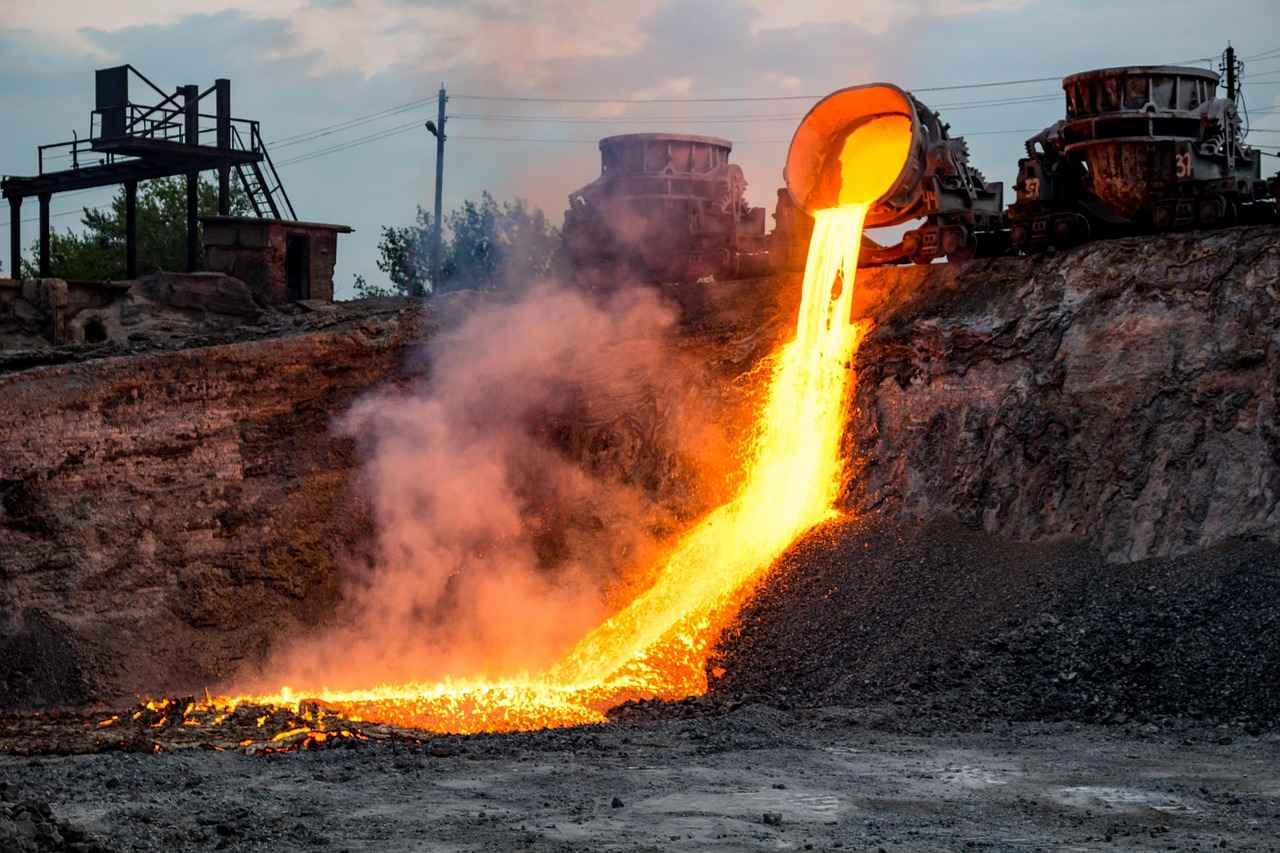
Practical Implications of the Mpemba Effect
The Mpemba effect, a fascinating phenomenon where hot water can freeze faster than cold under certain conditions, has intriguing practical implications across various fields. Understanding this effect can lead to significant advancements in both culinary practices and industrial processes.
Applications in Cooking
In the culinary world, chefs are constantly seeking ways to enhance their cooking techniques. The Mpemba effect can be particularly useful for rapid freezing or cooling of ingredients. For instance, when preparing frozen desserts, chefs may opt to use hot water or heated mixtures to achieve a quicker freeze time. This not only saves time but also can improve the texture of the final product. By understanding the conditions that favor the Mpemba effect, culinary professionals can experiment with different temperatures and methods to optimize their recipes.
Impacts on Industrial Processes
Industries that rely on freezing processes, such as food preservation and pharmaceuticals, can greatly benefit from insights into the Mpemba effect. In food processing, for example, knowing that hot water can freeze faster might lead to innovations in freezing technologies. This could result in reduced energy consumption and improved product quality. Additionally, in pharmaceutical manufacturing, where precise temperature control is crucial, leveraging the Mpemba effect can enhance the efficiency of freezing biological samples or vaccines, ensuring that they maintain their efficacy.
| Field | Application | Benefits |
|---|---|---|
| Culinary | Rapid freezing of desserts | Time-saving, improved texture |
| Food Processing | Innovative freezing technologies | Energy efficiency, quality preservation |
| Pharmaceuticals | Freezing biological samples | Enhanced efficiency, maintained efficacy |
Research and Development Opportunities
The Mpemba effect also opens doors for research and development in various scientific fields. Understanding the underlying mechanisms can lead to breakthroughs in thermodynamics and material sciences. Researchers can explore how different variables, such as container shape and environmental conditions, interact with the Mpemba effect. This knowledge can pave the way for new technologies that utilize temperature dynamics more effectively.
Education and Public Awareness
Furthermore, increasing public awareness about the Mpemba effect can enhance educational curricula in science. By incorporating this phenomenon into lessons on thermodynamics and physical science, educators can engage students with real-world applications of scientific principles. This can foster a greater interest in science and technology careers among young learners.
In conclusion, the Mpemba effect has substantial practical implications that span culinary arts, industrial processes, and educational opportunities. By leveraging this phenomenon, professionals can optimize their practices, improve efficiency, and inspire the next generation of scientists. Understanding the Mpemba effect not only enriches our knowledge of water’s behavior but also highlights the interconnectedness of science and everyday life.
Applications in Cooking
The Mpemba effect presents an intriguing opportunity for chefs and culinary enthusiasts to rethink traditional methods of freezing and cooling. By understanding this phenomenon, cooks can enhance their culinary techniques, optimize food preparation, and even improve the texture of certain dishes. This section delves into the practical applications of the Mpemba effect in the kitchen.
One of the primary applications of the Mpemba effect is in rapid freezing. When chefs need to freeze items quickly—such as for making ice creams or sorbets—a hot mixture can be placed in a shallow container. The increased surface area allows for faster heat dissipation, which can lead to quicker freezing times. For instance, when preparing homemade ice cream, starting with a warm base can help achieve a smoother texture by reducing the size of ice crystals that form during the freezing process.
Additionally, the Mpemba effect can be utilized in cooling beverages. Bartenders often need to chill drinks rapidly without diluting them with ice. By using hot water to pre-chill glassware or mixing hot water with other ingredients, they can achieve a colder drink faster than if they started with cold water. This technique not only saves time but can also enhance the overall drinking experience.
- Improved Texture: Hot mixtures can freeze more uniformly, resulting in a creamier texture in frozen desserts.
- Faster Cooling: Using hot water in cooling processes can significantly reduce wait times for chilled dishes.
- Flavor Retention: Rapid freezing can help preserve the flavors and aromas of ingredients, improving overall dish quality.
Moreover, the Mpemba effect can play a role in defrosting techniques. When defrosting frozen foods, starting with a warm water bath can expedite the process while maintaining the quality of the food. This is particularly useful for delicate items such as seafood, where even a slight delay can affect freshness.
In professional kitchens, where time is often of the essence, understanding the Mpemba effect can lead to greater efficiency. Chefs can experiment with various temperatures and freezing techniques to discover optimal methods for their specific dishes. For example, a chef might find that certain sauces or stocks freeze better when initially heated, allowing for better storage and later use.
In conclusion, the Mpemba effect offers a unique perspective on freezing and cooling in culinary practices. By leveraging this phenomenon, chefs can enhance their efficiency, improve the quality of their dishes, and explore new techniques that challenge traditional cooking wisdom. As culinary science continues to evolve, the practical applications of the Mpemba effect will undoubtedly inspire innovative cooking methods.
Impacts on Industrial Processes
The Mpemba effect, which suggests that hot water can freeze faster than cold under certain conditions, has intriguing implications for various industries. Understanding this phenomenon can lead to significant enhancements in operational efficiency and cost-effectiveness. This section delves into how different sectors can leverage insights from the Mpemba effect to optimize their freezing processes.
In the food industry, rapid freezing is essential for preserving freshness and quality. By applying the principles of the Mpemba effect, food processors can potentially reduce freezing times, thereby maintaining the integrity of food products. For instance, when hot soups or sauces are cooled rapidly, they can be frozen more efficiently, minimizing ice crystal formation that can degrade texture.
In the pharmaceutical sector, the preservation of sensitive biological materials such as vaccines and enzymes is crucial. Utilizing the Mpemba effect could lead to improved freezing techniques that enhance the stability of these products. By freezing hot samples quickly, companies can prevent the formation of large ice crystals, which can damage cellular structures and reduce the efficacy of vaccines.
Industries involved in ice production and cold storage can also benefit from the Mpemba effect. By optimizing the freezing process based on this phenomenon, ice manufacturers can increase production rates while lowering energy costs. Understanding the dynamics of heat transfer in water can help in designing better freezing systems that capitalize on the Mpemba effect, leading to more efficient operations.
The Mpemba effect may also have implications for environmental science, particularly in understanding natural freezing processes in lakes and rivers. Industries focused on environmental monitoring can apply these insights to predict ice formation under varying conditions, aiding in ecological studies and climate research.
Ongoing research into the Mpemba effect offers opportunities for innovation across various fields. By investing in R&D, companies can explore new materials and technologies that enhance freezing efficiency. This could lead to breakthroughs in how we understand heat transfer and phase changes in water, further advancing industrial applications.
While the Mpemba effect presents exciting possibilities, it is essential to recognize the challenges associated with its application. Factors such as container material, environmental conditions, and the initial temperature of water can all influence the effectiveness of this effect. Industries must conduct thorough research and testing to determine the best practices for implementing these insights into their processes.
In conclusion, the Mpemba effect holds significant potential for optimizing freezing processes across various industries. By understanding and applying this phenomenon, companies can enhance operational efficiency, reduce costs, and improve product quality. As research continues to unfold, the practical applications of the Mpemba effect are likely to expand, paving the way for innovative solutions in freezing technology.
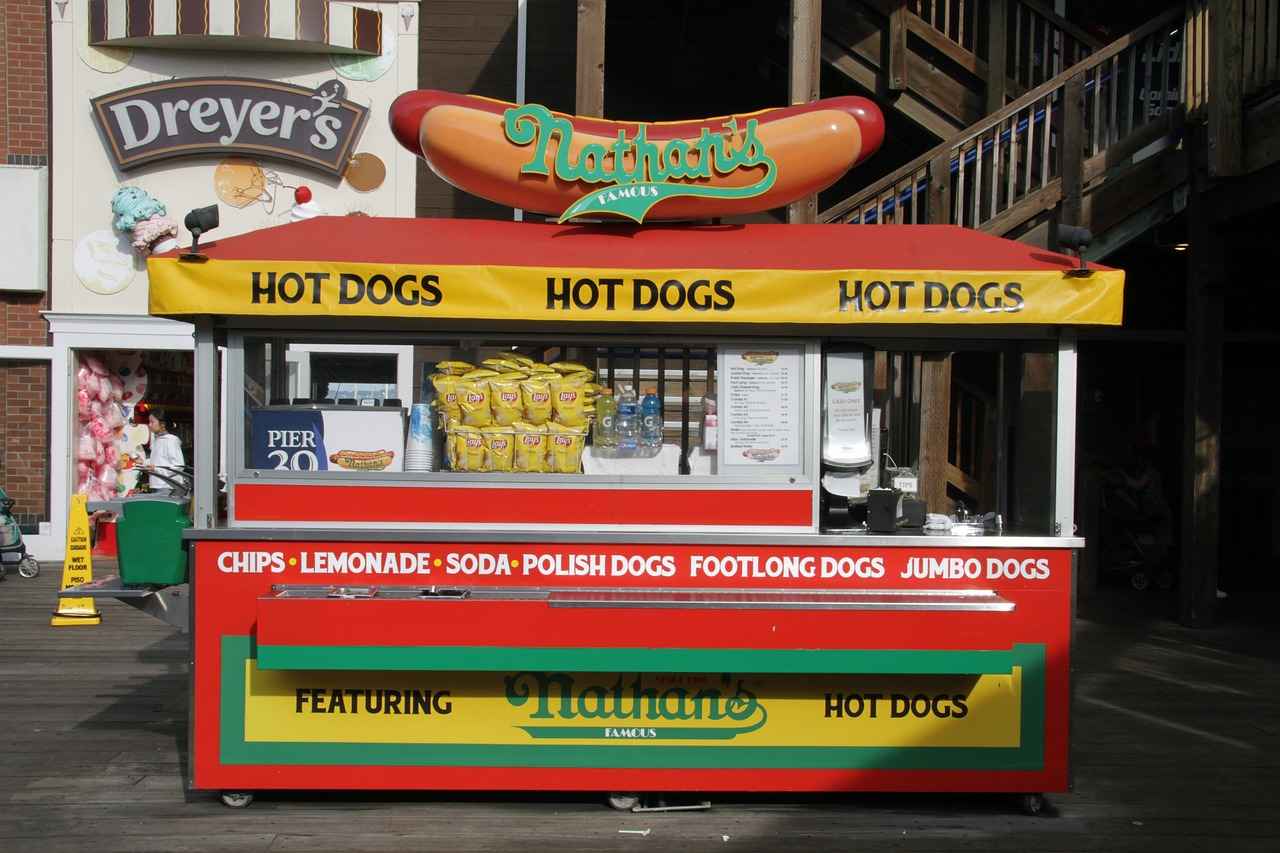
Common Misconceptions About Freezing Water
The freezing of water is a fascinating subject that often leads to confusion and misconceptions, particularly regarding the Mpemba effect. This phenomenon suggests that, under certain conditions, hot water can freeze faster than cold water. However, many misunderstandings surround this effect, leading to widespread myths and inaccurate beliefs.
One of the most common misconceptions is that hot water always freezes faster than cold water. While the Mpemba effect has been observed, it does not apply universally. The conditions necessary for the effect to occur include factors such as the initial temperature of the water, the environment, and the type of container used. In many cases, cold water will freeze faster than hot water, especially when all other variables are equal.
Another prevalent myth is that temperature alone determines how quickly water freezes. This is misleading, as several other factors play a crucial role in the freezing process:
- Container Shape: The shape and material of the container can significantly affect heat transfer. For instance, a wide, shallow container allows for more evaporation, which can lead to faster cooling.
- Evaporation: Hot water can lose mass through evaporation, which may result in a smaller volume of water that needs to freeze, thus potentially speeding up the freezing process.
- Convection Currents: Hot water can create convection currents that distribute temperature more evenly, aiding in quicker cooling.
Many people believe that the purity of water is irrelevant to the freezing process. However, impurities can significantly impact freezing points. For example, minerals and other substances in the water can alter how quickly it freezes, making it crucial to consider the water’s composition when discussing the Mpemba effect.
The environment where the water is frozen also plays a vital role. Factors like humidity, air pressure, and even the presence of wind can influence freezing rates. For instance, in a windy environment, hot water may freeze faster due to increased evaporation and cooling. Conversely, in a still, humid environment, cold water might freeze more quickly.
Despite the various myths surrounding the Mpemba effect, scientific research continues to explore this intriguing phenomenon. Studies have shown that while hot water can sometimes freeze faster, it is not a guaranteed outcome. Researchers are investigating the underlying mechanisms, including molecular behavior and thermodynamic principles, to better understand the conditions that favor this effect.
In summary, while the Mpemba effect presents a captivating challenge to our understanding of freezing, it is essential to approach the topic with a clear perspective. By recognizing the various factors at play, we can debunk common misconceptions and appreciate the complexities of this phenomenon. Understanding these principles not only enriches our knowledge of physics but also enhances practical applications in both everyday life and scientific research.
Hot Water Always Freezes Faster
One common misconception is that hot water will always freeze faster than cold water. This belief, while intriguing, is not universally true and requires a deeper understanding of the Mpemba effect. The Mpemba effect refers to the phenomenon where, under certain conditions, hot water can freeze faster than cold water. However, this does not mean that it is a guaranteed outcome in every scenario.
To grasp when the Mpemba effect occurs, it is essential to consider several influencing factors. Temperature is a critical variable, but it is not the only one. The environmental conditions, such as humidity and air pressure, can also play significant roles. For instance, if the air is particularly dry, the evaporation of hot water can lead to a decrease in volume, allowing it to freeze more quickly. Conversely, in a high-humidity environment, cold water may freeze faster.
| Factor | Effect on Freezing |
|---|---|
| Temperature | Hot water may freeze faster under specific conditions. |
| Container Material | Different materials can conduct heat differently, affecting freezing times. |
| Evaporation | Hot water may lose mass through evaporation, leading to quicker freezing. |
| Surface Area | Wider containers allow for faster heat loss. |
Another misconception is that the Mpemba effect is a reliable phenomenon. It is essential to note that this effect does not occur under all circumstances. In many instances, cold water will freeze faster than hot water, especially when the temperature difference is minimal. The conditions must be just right for the Mpemba effect to take place, including the specific properties of the water and the freezing environment.
- Evaporation: Hot water can evaporate, reducing its volume and, consequently, the amount of water that needs to freeze.
- Convection Currents: Hot water may create convection currents that help distribute temperature more evenly, aiding in faster freezing.
- Container Shape: The shape and size of the container can influence how quickly heat dissipates from the water.
Furthermore, the initial temperature of the water is not the sole determinant of freezing time. Other factors such as the size of the ice crystals formed during the freezing process also play a vital role. In colder temperatures, the rate at which ice crystals grow can differ significantly between hot and cold water, leading to varying freezing times.
In conclusion, while the Mpemba effect presents a fascinating challenge to our understanding of thermodynamics, it is crucial to approach the concept with caution. The assertion that hot water always freezes faster than cold is an oversimplification. Instead, it is a complex interplay of various factors that determine the freezing rates of water. By recognizing these nuances, we can better appreciate the science behind this captivating phenomenon.
Temperature Alone Determines Freezing Time
When discussing the freezing process of water, many people often assume that temperature is the only factor that determines how quickly water will freeze. However, this notion is a simplification of a much more complex phenomenon. In reality, several additional variables play crucial roles in the freezing process, contributing to the overall freezing rate.
Firstly, the purity of the water can significantly influence freezing times. Impurities such as salts or minerals lower the freezing point of water, a phenomenon known as freezing point depression. When impurities are present, the water must reach a lower temperature to freeze, which can alter the expected freezing time.
Another important factor is the container shape and material. The design of the container can affect how heat is transferred away from the water. For example, a wide, shallow container allows for greater exposure to cold air, facilitating faster heat loss compared to a tall, narrow container. Additionally, materials that conduct heat better, such as metals, can expedite the freezing process by drawing heat away from the water more efficiently.
Environmental conditions also play a critical role in freezing rates. Factors such as air temperature, humidity, and even airflow can impact how quickly water freezes. For instance, in a windy environment, the increased airflow can enhance the cooling effect on the surface of the water, leading to faster freezing. Conversely, high humidity can slow down the freezing process due to the presence of water vapor in the air.
Furthermore, the initial temperature of the water is not the only variable at play. The heat transfer mechanisms, such as convection and conduction, are essential in determining how quickly water loses heat. For instance, hot water may experience more vigorous convection currents, which can help distribute heat more evenly and lead to faster cooling under certain conditions.
The size of the water sample is another critical factor. Smaller quantities of water will freeze faster than larger quantities due to the greater surface area exposed to the cold environment. This principle can be observed when comparing a small ice cube tray to a large block of ice; the smaller ice cubes will solidify before the larger block, regardless of the initial temperature.
Finally, the presence of air bubbles can also affect freezing rates. Bubbles can create insulation around the water, slowing down the heat loss. In contrast, water that is agitated or stirred can release trapped air, leading to more efficient freezing.
In summary, while temperature is an essential factor in the freezing process, it is far from the only one. The interaction of various elements such as water purity, container shape, environmental conditions, heat transfer mechanisms, sample size, and air bubbles all contribute to the complexities of how water freezes. Understanding these factors can help debunk the myth that temperature alone determines freezing time, providing a more comprehensive view of this fascinating process.
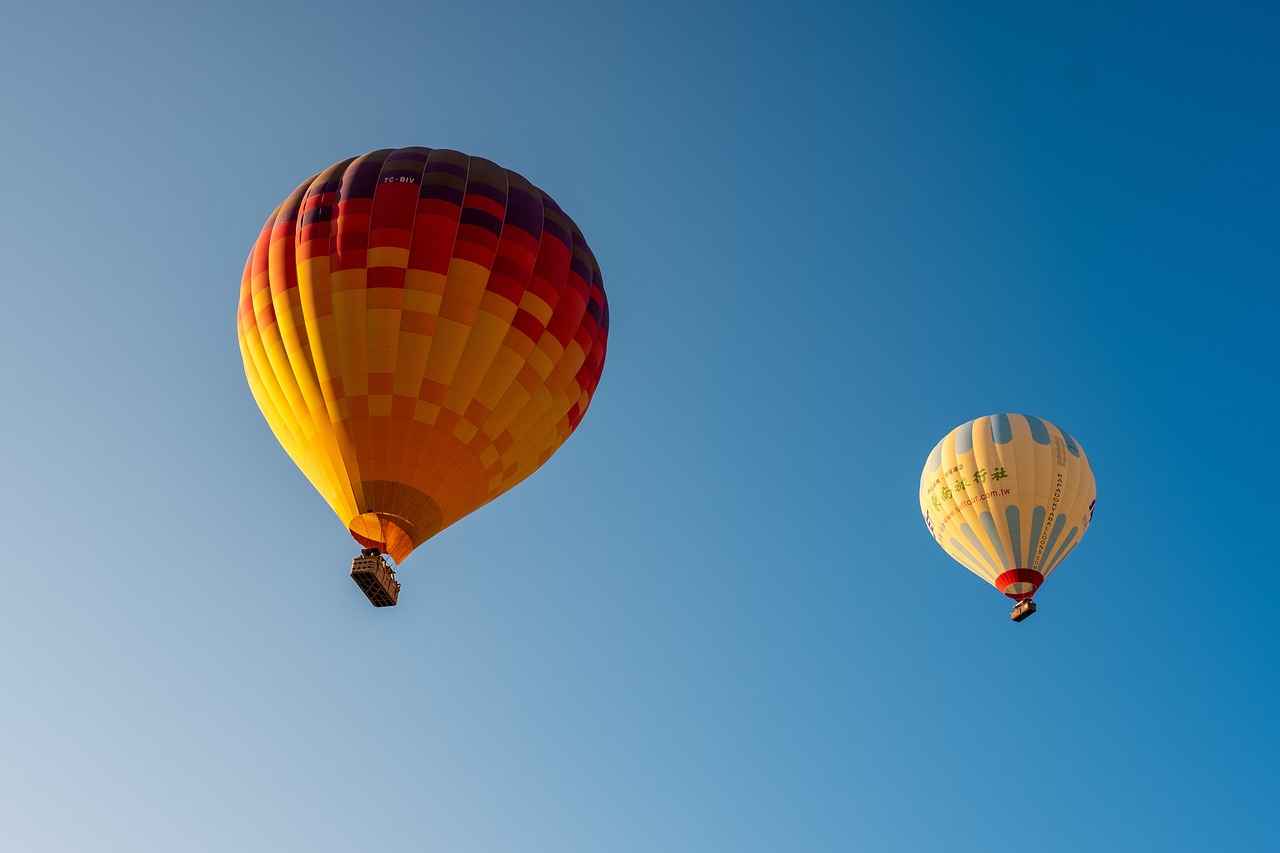
Conclusion: The Ongoing Debate
The Mpemba effect, which suggests that hot water can freeze faster than cold water under certain conditions, has intrigued and perplexed scientists for decades. This phenomenon, first documented by the Tanzanian student Erasto Mpemba in the 1960s, raises questions about the fundamental principles of thermodynamics and molecular behavior. Despite numerous studies, the underlying mechanisms remain elusive, leading to ongoing debates within the scientific community.
Current research aims to unravel the complexities of the Mpemba effect by examining various contributing factors. One prominent theory is that the rate of evaporation plays a significant role. Hot water can lose a portion of its mass through evaporation, which may lead to a faster freezing process due to a reduced volume of water that needs to freeze. This theory suggests that as the water evaporates, the remaining liquid cools more rapidly.
Another important factor is convection currents within the water. When water is heated, it can create convection currents that promote uneven temperature distribution. These currents may facilitate faster cooling in some scenarios, leading to the Mpemba effect. Additionally, the shape and material of the container holding the water can influence freezing rates. For instance, a shallow container may allow for quicker heat loss, promoting faster freezing compared to a deeper one.
Research also highlights the role of supercooling, where water can remain liquid below its freezing point. Hot water may be less prone to supercooling due to its initial thermal energy, allowing it to transition to solid ice more readily when conditions are right.
Despite these theories, the Mpemba effect is not universally accepted, and conditions that favor it are not fully understood. Some studies have shown that under controlled conditions, cold water can freeze faster than hot water, depending on variables such as initial temperature, environmental conditions, and container characteristics. This inconsistency has led to skepticism regarding the reliability of the Mpemba effect as a general principle.
Future research is essential to clarify the conditions under which the Mpemba effect occurs and to develop a comprehensive understanding of the underlying physics. Scientists are utilizing advanced technologies and methodologies to explore this phenomenon in greater detail, including high-speed cameras and sophisticated thermal sensors to observe the freezing process in real-time.
In conclusion, the Mpemba effect remains a captivating topic of investigation, with ongoing debates highlighting the complexities of thermal dynamics. As researchers continue to explore this phenomenon, they may uncover new insights that challenge our understanding of heat transfer and phase changes. The quest for answers not only enriches scientific knowledge but also has practical implications across various fields, from culinary arts to industrial applications.
Frequently Asked Questions
- Does hot water always freeze faster than cold water?
No, hot water does not always freeze faster than cold water. The Mpemba effect, which describes this phenomenon, occurs under specific conditions. Factors like container shape, environmental conditions, and the initial temperature can all influence freezing rates.
- What causes the Mpemba effect?
The Mpemba effect can be attributed to several factors, including evaporation, convection currents, and the properties of water molecules. When hot water is exposed to cold conditions, it may lose some mass through evaporation, which can lead to faster freezing times in certain scenarios.
- Are there practical applications of the Mpemba effect?
Yes! Understanding the Mpemba effect can benefit various fields. In cooking, chefs can use this knowledge to speed up freezing processes. Likewise, industries that rely on freezing can optimize their operations by applying insights from this intriguing phenomenon.
- Is the Mpemba effect a widely accepted concept?
The Mpemba effect is still a topic of debate among scientists. While many acknowledge its existence, research continues to explore the underlying mechanisms and conditions that make it possible. So, it’s an ongoing discussion in the scientific community!


